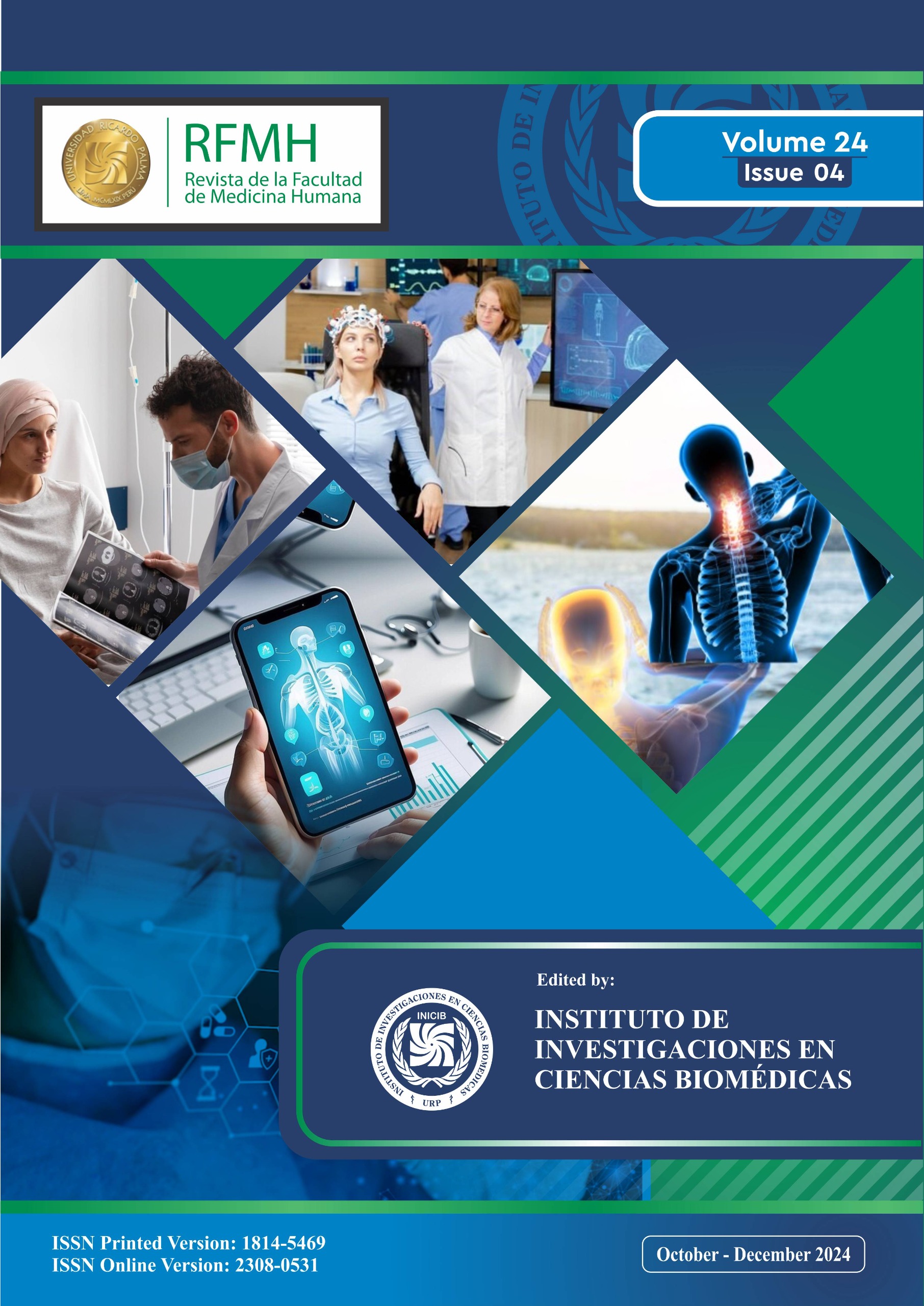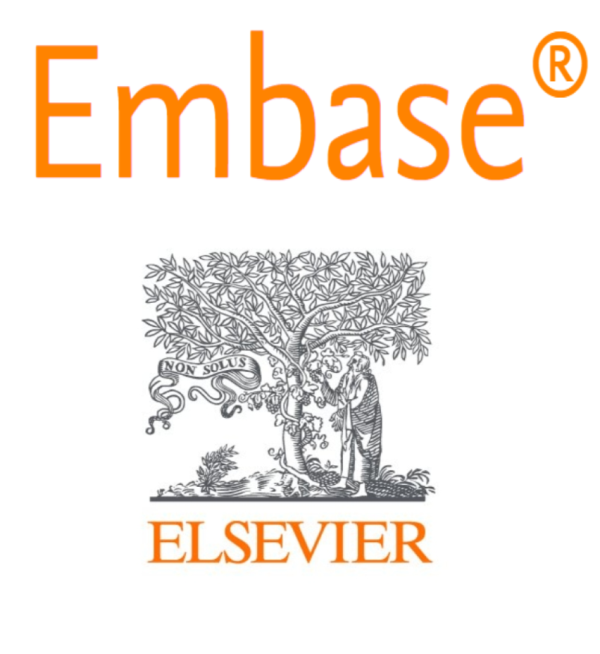Congenital microtia and congenital aural atresia: A literature review
Microtia y atresia aural congénita: una revisión de la literatura | 小耳畸形和先天性耳道闭锁:文献综述
Keywords:
Congenital microtia, ear external, ear canal, hearing loss, neonatal screeningAbstract
Permanent hearing loss is common at birth, and the negative consequences for language, cognitive, and social-emotional skills are particularly important. Microtia and congenital aural atresia is a disorder of the external ear that can occur in isolation or in association with another malformation. The objective of the present study was to know and compile the current evidence on microtia and aural atresia. The PubMed, Scopus, and SciELO databases were consulted, from the year 2010 to the year 2023. All the bibliographic references were searched in relation to the keywords: microtia, and aural atresia. Were evaluated review and research articles, which in general, were less than 05 years published. It was limited to articles in Spanish and English and were identified by titles. Were identified once the articles of interest, the following were considered as inclusion criteria: 1. That they examine the diagnosis and treatment of microtia and congenital aural atresia 2. They address the subject according to a systematic methodology (quantitative, qualitative, and others). The causes of these disorders are not fully understood. In conclusion, auditory evoked potentials and audiometry are the test of choice for cases of microtia and congenital aural atresia. Surgical correction is often not the preferred treatment; the hearing result is no better than that of bone conduction devices. Likewise, the functional aspect should be prioritized over the aesthetic one since early hearing loss intervenes in the development of language in the child.
Downloads
References
Marin Marín D. Tamizaje auditivo neonatal: Guía para el diagnóstico temprano. Rev Peru Investig Matern Perinat. 2022; 11(4): 35-42. doi: https://doi.org/10.33421/inmp.2022311.
Andrews J, Kopacz A, Hohman M. StatPearls: Ear Microtia,[Internet]. Treasure Island (FL): StatPearls Publishing; 2023 [citado el 05 de junio de 2023]. Disponible en: https://www.ncbi.nlm.nih.gov/books/NBK563243/
Organización Mundial de la Salud. Sordera y pérdida de la audición: Datos y cifras [Internet]. 2024. [citado el 06 de agosto de 2024]. Disponible en: https://www.who.int/es/news-room/fact-sheets/detail/deafness-and-hearing-loss.
Al-Sulaimani AK, Al-Khabori MS, Haridi KM, Al-Busaidi SS. Prevalence and characteristics of microtia in Oman: 37 Years analysis. J Plast Reconstr Aesthet Surg. 2023;76:292-94. doi: 10.1016/j.bjps.2022.10.047l.
Cywka KB, Król B, Skarżyński PH. Effectiveness of Bone Conduction Hearing Aids in Young Children with Congenital Aural Atresia and Microtia. Med Sci Monit. 2021;27:1-8. doi: 10.12659/MSM.933915.
Truong MT, Liu YC, Kohn J, Chinnadurai S, Zopf DA, Tribble M, et al. Integrated microtia and aural atresia management. Front Surg. 2022;9:1-18. doi: 10.3389/fsurg.2022.944223.
Abdel-Aziz M. Congenital aural atresia. J Craniofac Surg. 2013;24(4):418-22. doi: 10.1097/SCS.0b013e3182942d11.
Kim MB, Cho YS. Acoustic Reflex After Surgical Repair in Patients with Congenital Aural Atresia. J Int Adv Otol. 2022;18(6):482-87. doi: 10.5152/iao.2022.21514.
Abrol A, Bly R, Sie KCY, Bhrany AD. Contemporary Management of Microtia. Facial Plast Surg. 2022;38(4):393-404. doi: 10.1055/a-1854-2352.
Volgger V, Schießler IT, Müller J, Schrötzlmair F, Pollotzek M, Hempel JM. Audiological results and subjective benefit of an active transcutaneous bone-conduction device in patients with congenital aural atresia. Eur Arch Otorhinolaryngol. 2022;279(5):2345-52. doi: 10.1007/s00405-021-06938-8.
Yang L, Chen P, Liu Y, Yang J, Zhao S. Clinical manifestations and treatment strategies for congenital aural atresia with temporomandibular joint retroposition: a retrospective study of 30 patients. J Otolaryngol Head Neck Surg. 2023;52(1):24. doi: 10.1186/s40463-022-00615-4.
Gautam R, Kumar J, Pradhan GS, Meher R, Arya S. Congenital Aural Atresia: What the Radiologist Needs to Know? Curr Probl Diagn Radiol. 2022;51(4):599-616. doi: 10.1067/j.cpradiol.2021.06.017.
Nazer J, Lay G, Cifuentes L. Prevalencia de nacimiento de microtia-anotia. Maternidad del Hospital Clínico de la Universidad de Chile, período 1983-2005. Rev Méd Chile. 2006 [citado el 05 de junio 2023]; 134:1295-1301. Disponible en: https://www.scielo.cl/scielo.php?script=sci_arttext&pid=S0034-98872006001000012.
Aguinaga M, Frías S, Arenas D, Morán V. Microtia-atresia: aspectos clínicos, genéticos y genómicos. Bol Med Hosp Infant Mex. 2014 [citado el 05 de junio 2023]; 71 (6): 387-95. Disponible en: https://www.scielo.org.mx/scielo.php?script=sci_arttext&pid=S1665-11462014000600010.
Bardales M. Impacto del uso de sistemas de conducción ósea en niños con microtia [Tesis de maestría]. Trujillo, Perú: Universidad Privada Antenor Orrego; 2021 [citado el 05 de junio 2023]. Disponible en: https://repositorio.upao.edu.pe/handle/20.500.12759/8843.
Hunter A, Frias JL, Gillessen-Kaesbach G, Hughes H, Jones KL, Wilson L. Elements of morphology: standard terminology for the ear. Am J Med Genet A. 2009;149(1):40-60. doi: 10.1002/ajmg.a.32599.
Shibazaki R, Satoru N. Preferential Associated Malformation in Patients With Anotia and Microtia. The journal of craniofacial surgery. 2019; 30 (1): 66-70. doi: https://doi.org/10.1097/scs.0000000000004915.
Ferrario VF, Sforza C, Ciusa V, Serrao G, Tartaglia GM. Morphometry of the normal human ear: a cross-sectional study from adolescence to mid-adulthood. J Craniofac Genet Dev Biol. 1999 [citado el 10 de junio 2023];19(4):226-33. Disponible en: https://pubmed.ncbi.nlm.nih.gov/10731092/.
Orfila D, Tiberti L. Atresia congénita del oído y su manejo. Rev. Med. Clin. Condes. 2016; 27 (6): 880-91. doi: https://doi.org/10.1016/j.rmclc.2016.09.018
Clarke B. Otorrinolaringología pediátrica: Enfermedades del oído externo, [Internet]. España: Elsevier; 2020 [citado el 05 de junio de 2023]. 383p. Disponible en: https://www.clinicalkey.es/#!/browse/book/3-s2.0-C20190000271.
Isaacson G. UptoDate: Congenital anomalies of the ear [Internet]. 2022 [citado el 05 de junio de 2023. Disponible en: https://www.uptodate.com/contents/congenital-anomalies-of-the ear?search=microtia&source=search_result&selectedTitle=1~16&usage_type=default&display_rank=1
Marin C, López A, Zarante I. Microtia: una malformación olvidada. Etiología genética y estado del arte. Universitas Médica [Internet]. 2006 [citado el 05 de junio de 2023]: 47 (1): 80-90. Disponible en: https://www.redalyc.org/pdf/2310/231018678008.pdf.
Ministerio de salud. Guía de Práctica Clínica de Microtia de la Sub Unidad de Atención Integral Especializada del Paciente de Especialidades Quirúrgicas: Guía de Práctica Clínica de Microtia [Internet]. Perú: Instituto Nacional de Salud del Niño-San Borja; 2018 [citado el 05 de junio de 2023]. 24p. Disponible en: https://www.insnsb.gob.pe/guias-de-practica-clinicas/
Bly RA, Bhrany AD, Murakami CS, Sie KC. Microtia Reconstruction. Facial Plast Surg Clin North Am. 2016;24(4):577-91. doi: 10.1016/j.fsc.2016.06.011.
Teissier N, Benchaa T, Elmaleh M, Van Den Abbeele T. Malformaciones congénitas del oído externo y del oído medio. EMC-Otorrinolaringología. 2008; 37(4):1-11. doi: 10.1016/S1632-3475(08)53552-1.
Zhang TY, Bulstrode N, Chang KW, Cho YS, Frenzel H, Jiang D, et al. International Consensus Recommendations on Microtia, Aural Atresia and Functional Ear Reconstruction. J Int Adv Otol. 2019;15(2):204-8. doi: 10.5152/iao.2019.7383.
Tanzer R. Total reconstruction of the external ear. Plast Reconstr Surg Transplant Bull. 1959;23(1):1-15. doi: 10.1097/00006534-195901000-00001.
Gonzales GF. Impacto de la altura en el embarazo y en el producto de la gestación. Rev Peru Med Exp Salud Publica. 2012;29(2):242-9. doi: 10.1590/s1726-46342012000200013.
Chen X, Zhang R. Microtia epigenetics: An overview of review and new viewpoint. Medicine (Baltimore). 2019;98(41):1-7. doi: 10.1097/MD.0000000000017468.
Lancer H, Hood K, Halliday E, Tzifa K, Lloyd M, McDermott AL. Experience of the 'Ear Glove' in children with microtia. Int J Pediatr Otorhinolaryngol. 2022;160:111254. doi: 10.1016/j.ijporl.2022.111254.
Lee M, Cho Y, Han G, Oh J. Current Treatments for Congenital Aural Atresia. J Audiol Otol. 2020;24(4):161-66. doi: 10.7874/jao.2020.00325.
Universidad Ricardo Palma. Líneas de Investigación [Internet]. Universidad Ricardo Palma [consultado el 01 de abril de 2024]. Disponible en: https://www.urp.edu.pe/vicerrectorado-de-investigacion/lineas-de investigacion/.
Escorihuela V, Llópez I, Pitarch I, Latorre E, Marco J. Experiencia inicial con el implante osteointegrado Alpha 1 de Sophono. Acta Otorrinolaringol Esp. 2021; 65 (6): 361-64. Doi: 10.1016/j.otorri.2014.01.005.
Sun L, Ping L, Fan X, Wang J, Chen X. Simulator Verification Is Potentially Beneficial for the Fitting of Softband Bone Conduction Hearing Devices in Young Children. Otol Neurotol. 2024;45(7):500-8. Doi: 10.1097/MAO.0000000000004245.

Downloads
Published
How to Cite
Issue
Section
License
Copyright (c) 2024 Revista de la Facultad de Medicina Humana

This work is licensed under a Creative Commons Attribution 4.0 International License.





























